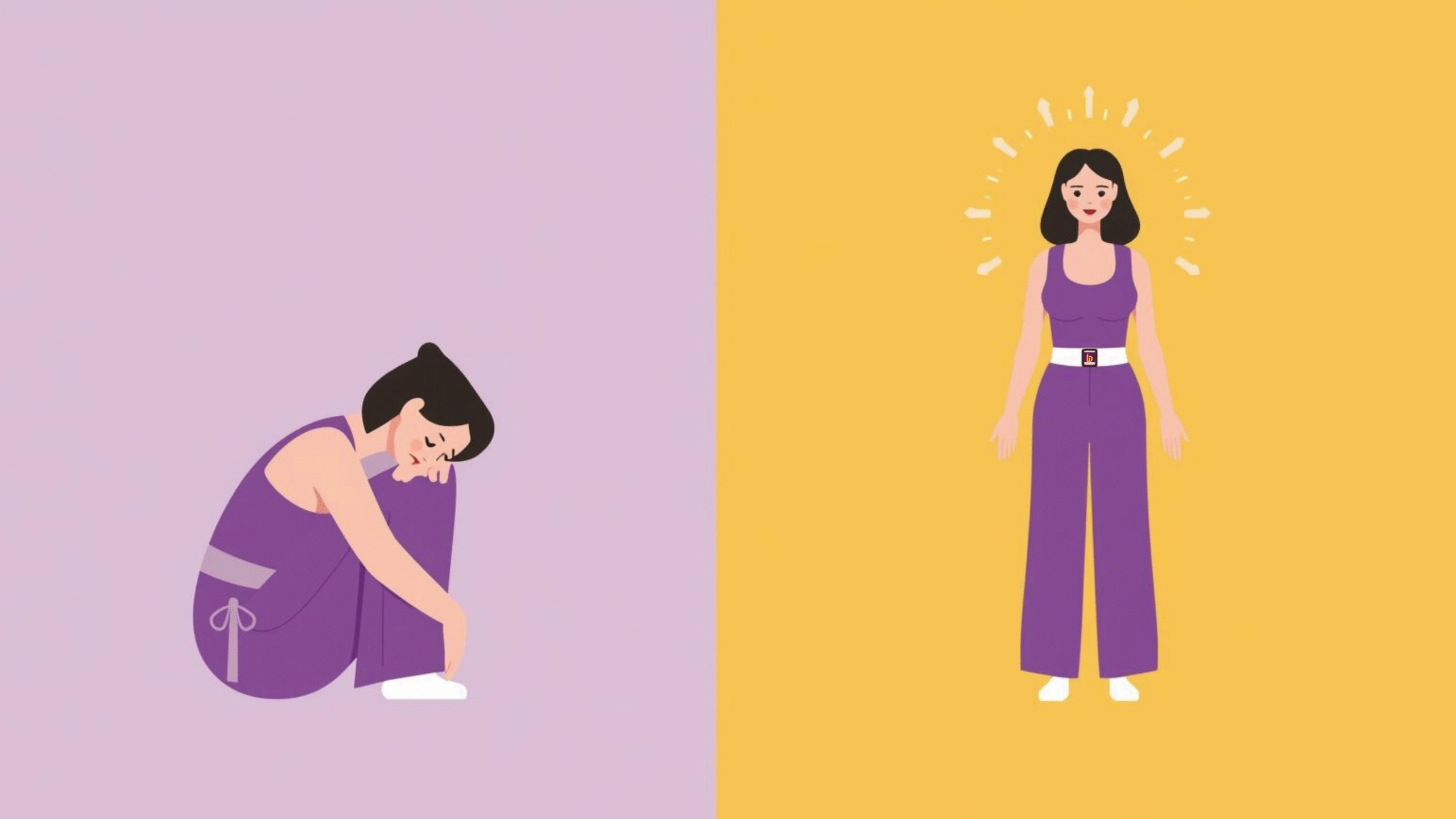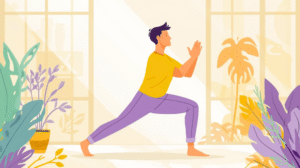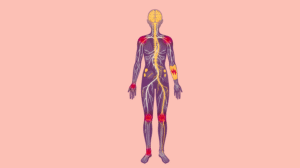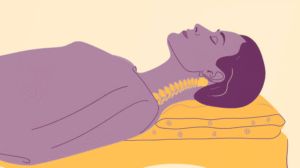Confidence isn’t just about what you say or how you talk, it’s about how you carry yourself.The way you walk into a room, the vibe you give off, even the energy you carry, it all begins with how you hold yourself. And here’s a kicker : Your posture is often the secret ingredient. Whether it’s another work day or your personal life, slouching or poor back posture can secretly steal away your self-esteem, making you feel smaller than you actually are. Over time, it’s not just about how others see or perceive you; it eventually starts your everyday mood and how you see yourself.
That’s where the posture corrector belt comes in. It has become more than just a back-support tool. Sure, it realigns your spine, but what most people don’t realize is that it also helps you improve your posture naturally, boosts your energy, and even gives your confidence a serious upgrade.
Think of it less as a medical gadget and more as a lifestyle hack. Even researchers suggest that the way you carry yourself directly impacts your mood, stress levels, and even how others treat you [1].
So let’s break down how this simple belt can shift the way you feel and the way the world sees you.
What Does a Good Posture Mean?
Proper posture means positioning your body such that your spine is comfortably aligned, minimizing the stress on muscles and joints. Proper posture involves:
Standing: Shoulders back, chin level, and ears above shoulders. Open chest, weight evenly distributed on both feet, legs and knees should be relaxed—knees should not be locked.
Sitting: Sitting upright with back straight. Shoulders are relaxed, but not protruding or hunched. Feet are flat on ground and knees and hips are approximately even angles form the knee to the hip, the knees should be relaxed. Lower back may be supported with pillow or chair support.
Walking: Head up, eyes looking out (not down), shoulders aligned with hips, arms swinging naturally at sides.
Proper posture is helpful to:
- Minimize muscle fatigue and back pain
- Support healthy breathing and circulation
- Minimize joint problems
- Exude confidence and positive body language
As a rule of thumb, posture is whether your position allows your body to reduce the overall stress on supporting structures, maintain comfort, and engage in physical activity in an efficient and functional way throughout the day.
Can a Posture Corrector Belt Really Boost Your Confidence and Mood?
The Surprising Link Between Posture and Confidence
Your posture is basically your body’s headline; it announces who you are before you say a word. Studies show that upright posture is linked to higher self-esteem, resilience, and positive emotions [2]. A hunched posture? That screams “low energy” or “uncertainty.”
How Poor Posture Makes People Judge You Before You Speak ?
We all do it. You notice someone slouching and instantly assume they’re shy, nervous, or not fully present. On the flip side, someone standing tall looks capable, confident, and in control. With the subtle help of a posture corrector belt, your body language tells the world a different storyone of presence and self-assurance.
How Slouching Drains More Than Just Your Look ?
Slouching isn’t only about appearances. It also affects how you feel. People with rounded shoulders and forward heads often report lower energy, higher stress, and even negative moods [3]. Correcting posture literally changes your internal dialogue.
Why Standing Taller Can Instantly Boost Confidence and Mood ?
The Science of Self-Esteem in Your Spine
Harvard research on “power posing” found that body posture actually influences confidence hormones like testosterone and cortisol [4]. Translation? Standing tall can make you feel powerful, not just look powerful.
From “Fake It” to “Feel It” in Real Life
Standing tall isn’t just a motivational slogan, it works in real-world situations. Job interviews, presentations, even dates. The simple act of holding yourself upright shifts the energy of the entire interaction.
How a Belt Makes Standing Tall Effortless?
Instead of reminding yourself every five minutes to sit up straight, the posture corrector belt gently cues your muscles into the right alignment. Before long, good posture feels natural.
Improve Posture Naturally with a Posture Corrector Belt
The Common Pitfall: Just “Trying Harder”
If you’ve ever told yourself, “I’ll just remember to sit up straight,” you already know how that ends. Muscles fatigue quickly, habits kick in, and you’re slouched again within minutes.
The Belt as Training Wheels for Your Spine
The posture corrector belt isn’t a replacement for strong back muscles, it’s more of a reminder tool. It helps retrain your body while you build strength through daily posture exercises [5].
Easy Exercises to Pair with the Belt
Moves like chin tucks, wall angels, and planks build the muscle endurance needed to maintain upright posture long after you’ve taken the belt off [6].
Boost Your Confidence Through Posture Corrector Belt !

Upright Posture Benefits Go Beyond Looks
When your spine is aligned, you breathe better, focus more, and even experience reduced fatigue [7]. That’s not vanity, that’s science.
The “Put-Together” Effect
People often describe upright posture as looking “sharp” or “composed.” It’s subtle, but it changes how others interact with you, both socially and professionally.
Real-Life Confidence Wins with the Belt
- Job interview: Walking in tall signals competence.
- Dating: Good posture makes you come across as more approachable.
- Presentations: Upright posture projects authority, keeping the audience tuned in.
Back Support for Everyday Use: More Than a Quick Fix
What Sitting All Day Does to Your Spine?
Eight hours at a desk compresses your spine and strains your back muscles [8]. Over time, this leads to stiffness, soreness, and bad posture habits.
How the Belt Balances Everyday Strain?
By giving gentle reinforcement, the posture corrector belt redistributes pressure and reduces stress on tired muscles. It’s back support for everyday use, not just a “when things hurt” tool.
The Sweet Spot: Comfort + Consistency
The trick isn’t to wear it 24/7, it’s about moderate, consistent use. Studies show that a few hours daily can reinforce posture without weakening your core [9].
Posture and Self-Esteem: The Mind-Body Loop
How Your Posture Affects How You Feel About Yourself ?
Psychologists argue that posture is like a mirror ; it reflects and shapes your emotions. Stand upright, and your self-esteem rises.
The Domino Effect of Good Posture
Think of it this way :- Good posture → better mood → more confidence → stronger relationships. It’s a self-reinforcing cycle.
Stories That Prove It Works
Students report feeling more confident during classroom discussions, and professionals say posture improvements helped them command attention in meetings.
Is Poor Posture Secretly Making You Look Older?
The Surprising Link Between Posture and Aging
Poor posture doesn’t just cause discomfort, it can actually make you look and feel older than you are. Rounded shoulders and forward neck posture are associated with reduced mobility and even accelerated signs of aging [10].
How the Belt Helps You “Roll Back the Years”?
By supporting spinal alignment, the posture corrector belt keeps your stance upright and youthful, protecting mobility as you age.
Can Better Posture Really Boost Your Brain Power?
Posture and Mental Clarity
When you sit upright, blood flow and oxygen intake improve, which enhances focus and memory [11].
Belts as a Secret Productivity Hack
Wearing a posture corrector belt while working helps keep you aligned, reducing fatigue and improving concentration during long hours at your desk.
The Confidence Toolkit : Why the Posture Correction Belt Is Just the Beginning ?
The Belt as a Gateway Tool
Confidence is holistic. A posture corrector belt is one part of the equation, it sets the foundation.
Add-Ons That Multiply Confidence
Combine the belt with mindfulness, regular stretching, and self-care habits for long-term posture and confidence success.
The Surprising Upright Posture Benefits Nobody Brings Up !
- More Energy, Less Effort: Standing tall means your body uses less energy keeping you balanced, so you stay alert without feeling drained like your spine is doing the heavy lifting for you.
- Stress Reduction on Auto-Pilot: Upright posture naturally lowers cortisol, the stress hormone, helping you stay calm and cool even when everything around feels like a pressure cooker.
- Breathing Room, Literally: Good posture opens up your chest, giving your lungs more space to fill up with oxygen, so you breathe easier and feel refreshed even in the middle of a hectic day.
Spinal Alignment for Confidence: What the Research Really Says?
The Scientific Consensus
Research proves it: sitting up straight doesn’t just help your back, it boosts your mood and confidence while kicking fatigue to the curb. Good posture is like a natural pep talk for your brain.
How the Belt Trains You Without You Realizing ?
Your posture belt is like a stealthy coach, gently reminding your body to stand tall until it becomes second nature, no extra effort, just better habits on autopilot.
Beyond Back Pain – A Lifestyle Shift
These belts do more than ease pain; they change how you carry yourself, making you feel more confident and ready to take on the world ; kind of like upgrading your life’s software.
Posture Correction Tips: Making Your Belt Work Smarter
Wearing It Right
Wearing it the right way is the ultimate trick itself. Snug but comfortable is the rule. If it hurts, you’re doing it wrong.
Avoiding the “Crutch Trap”
Don’t wear it all day. Use it to remind your body, not replace your muscles.
Micro-Habits That Stick
Pair the belt with stretches, ergonomic desk setups, and breaks to stand up and move.
The Final Word: Does a Posture Corrector Belt Actually Make You More Confident?
Yes, but not magically. It works because posture is deeply tied to psychology, physiology, and perception. By aligning your spine, the posture corrector belt nudges you toward better confidence, sharper focus, and healthier living.
After all, It’s not just about standing straight, it’s about standing stronger.
Looking for more health and wellness solutions ? Don’t miss these related guides:-
- https://betterhood.in/learn/can-it-really-save-the-tech-neck-generation/
- https://betterhood.in/learn/adjustable-belt-that-supports-your-spine-all-day/
- https://betterhood.in/learn/posture-corrector-belt/
FAQs :-
1. How long should you wear a posture corrector belt each day?
Wearing it for 1–3 hours daily is ideal.
2. Does it permanently fix bad posture?
No, but paired with strengthening exercises, it helps create lasting change.
3. Can it really boost confidence?
Yes, research shows upright posture improves mood and self-perception .
4. Are posture belts safe for daily use?
Yes, when used moderately. Overuse may cause muscle dependence.
5. What’s the difference between belts and braces?
Belts support alignment and retraining; braces are more medical, for injury recovery.
6. Do I still need to exercise if I’m wearing one?
Absolutely. Exercise keeps your results sustainable.
References
- Peper, E., Lin, I. M., & Harvey, R. (2017). Posture and mood: Implications for health. Applied Psychophysiology and Biofeedback. Retrieved from https://biofeedbackhealth.org/wp-content/uploads/2017/11/0-article-biof-45-02-36-41.pdfbiofeedbackhealth.
- Nair, S., Sagar, M., Sollers, J., Consedine, N., & Broadbent, E. (2015). Do slumped and upright postures affect stress responses? Health Psychology. https://doi.org/10.1037/hea0000146
- Wilkes, C. (2017). Upright posture improves affect and fatigue in people with mild-to-moderate depression. Journal of Health Psychology, 22(9), 1151–1158. https://pubmed.ncbi.nlm.nih.gov/27494342
- Carney, D. R., Cuddy, A. J. C., & Yap, A. J. (2010). Power posing: brief nonverbal displays affect neuroendocrine levels and risk tolerance. Psychological Science, 21(10), 1363–1368. https://doi.org/10.1177/0956797610383437 PubMed+
- Hospital for Special Surgery (HSS). (2021, March 9). Do posture correctors work? Expert advice from a PT. Hospital for Special Surgery.https://www.hss.edu/health-library/move-better/do-posture-correctors-work
- Titcomb, D. A. (2023). The effects of postural education and corrective exercise on posture: A systematic review. Physiotherapy, 109, 16-27. https://www.ncbi.nlm.nih.gov/pmc/articles/PMC10464763/
- Nair et al. (2015) and Wilkes (2017) show upright posture improves mood, reduces stress responses and fatigue – connecting posture to subjective energy and affect. PubMed+
- Milani, T. L., Sichting, F., & Kett, A. R. (2021). The effect of sitting posture and postural activity on low back muscle stiffness. Biomechanics, 1(2), 214-224. https://www.mdpi.com/2673-7078/1/2/18
- Kings Park Chiropractic. (2025, June 30). Why you should or should not wear a posture corrector every day. Retrieved from https://kingsparkchiropractic.com.au/2025/06/30/should-you-wear-a-posture-corrector-every-day-or-not/
- Beneyoga. (2025, January 20). Is posture the most important factor for healthy aging? Retrieved from https://beneyoga.co.uk/posture-most-important-for-healthy-ageing/
- Upright Posture. (2025, August 27). How spinal posture may influence brain blood flow: Insights from a groundbreaking MRA study. Retrieved from https://uprightposture.co.uk/research/how-spinal-posture-may-influence-brain-blood-flow-insights-from-a-groundbreaking-mra-study/



















